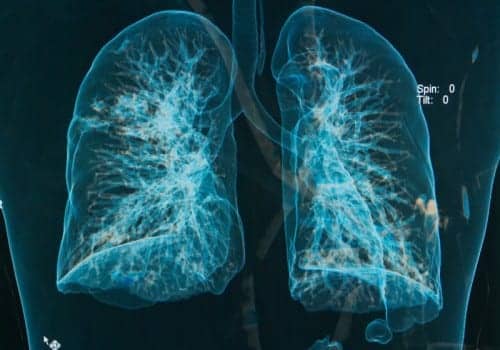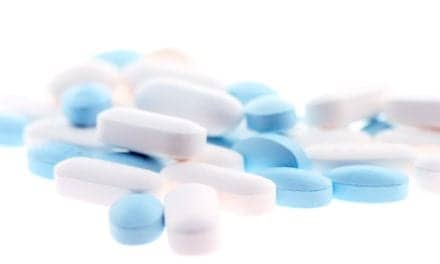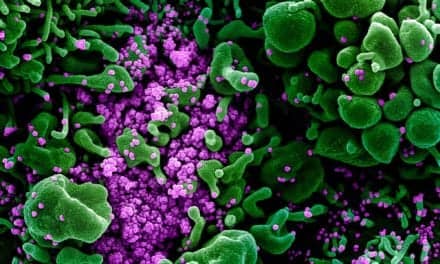Kamada Ltd, a plasma-derived protein therapeutics company focused on orphan indications, announces the submission of a Marketing Authorization Application (MAA) with the European Medicines Agency (EMA) for the Company’s proprietary, inhaled alpha-1 antitrypsin (AAT) therapy as a treatment for AAT deficiency (AATD). The filing was validated by the EMA.
“The submission of this application represents an important achievement that brings us one step closer to our goal of commercializing our inhaled AAT therapy for the benefit of patients suffering with AATD in Europe,” stated Amir London, Chief Executive Officer of Kamada. “The EMA has agreed to evaluate the totality of the data from our innovative Phase 2/3 study, and based upon orphan designation of the drug, prior discussions with regulators, the strength of these data, the support we get from the key opinion leaders and the patient community, and the persistent unmet need in this chronic disease, we are highly optimistic of a favorable outcome. Importantly, the combination of lung function measurements, which are the gold standard for pulmonary diseases, and symptom improvements, along with the safety profile of the product, gives us confidence these data meet the risk/benefit balance required by EMA.”
“The submission of the MAA for inhaled alpha-1 antitrypsin to treat AATD is a major step toward bringing another treatment to AATD patients. This study is the first study ever that shows inhaled AAT’s ability to reduce the decline in FEV1 in a patient population suffering from frequent exacerbations of dyspnea and coughing. I believe these results support the ability to treat AATD patients with Kamada’s inhaled AAT. I am looking forward to the regulatory authorities’ approval for the benefit of AATD patients,“ stated Jan Stolk, MD, Department of Pulmonology, Leiden University Medical Center and Principal Investigator of the Phase 2/3 clinical trial.
“Kamada’s MAA submission for its inhaled AAT is a major breakthrough that might affect the critical element of disease progression. This pioneering study demonstrated a significant improvement in lung function. It is to be hoped that this novel treatment will soon be available for the benefit of the AATD patient community,” commented Robert Stockley, MB, ChB, MD, DSc, FERS, Professor of Medicine, University Hospital Birmingham, and an Investigator in the Phase 2/3 clinical trial.
“This submission by Kamada marks a significant milestone in the management of pulmonary disease caused by severe AATD. Kamada’s inhaled AAT provides a simple treatment with twice-daily inhalation that offers improvements in lung function and reduces the discomfort of exacerbations. Approval of Kamada’s AAT for inhalation will offer a new and important intervention to protect this vulnerable patient population,” noted Kenneth R. Chapman, MD, MSc, FRCPC, FACP, FCCP, Director, Asthma & Airway Centre, University Health Network, Professor of Medicine, University of Toronto, and an Investigator in the Phase 2/3 clinical trial.
Phase 2/3 Trial Summary
The MAA filing is based upon a Phase 2/3 multicenter randomized, double-blind, placebo-controlled study that evaluated the safety and efficacy of Kamada’s inhaled formulation of human AAT to treat AATD in 168 patients. The study involved the inhalation of 80 mg of human AAT or placebo twice daily via the eFlow device for 50 weeks. The primary endpoint of the study was time to the first moderate or severe exacerbation event. Secondary endpoints included additional parameters of exacerbation events. Lung function parameters including Forced Expiratory Volume in One Second (FEV1) % of Slow Vital Capacity (SVC), FEV1 % predicted, FEV1 (liters) and Diffusing capacity (DLCO), were collected to support safety endpoints. Additional exploratory endpoints included CT densitometry in a subset of subjects, Quality of Life measurements and more.
Despite not meeting the primary or secondary endpoints, lung function parameters, which were collected to support safety endpoints, showed concordance of a significant treatment effect in the reduction of the inflammatory injury to the lung, which is known to be associated with a reduced loss of respiratory function.
Lung Function Results
Analysis of the lung functions in the safety population as described below indicate that after one year of daily inhalation of Kamada’s AAT, clinically and statistically significant improvements were seen in spirometric measures of lung function, particularly in bronchial airflow measurements FEV1 (L), FEV1% predicted and FEV1/SVC.
For lung function overall one-year effect:
FEV1 (L) rose significantly in AAT-treated patients and decreased in placebo-treated patients (+15ml for AAT vs. -27ml for placebo, a 42 ml difference, p=0.0268)
There was a trend towards better FEV1% predicted (0.54% for AAT vs. -0.62% for placebo, a 1.16% difference, p=0.065)
FEV1/SVC% rose significantly in AAT-treated patients and decreased in placebo-treated patients (0.62% for AAT vs. -0.87% for placebo, a 1.49% difference, p=0.0074)
For lung function change at week 50 vs. baseline:
-There was a trend towards reduced FEV1 (L) decline (-12ml for AAT vs. -62ml for placebo, a 50 ml difference, p=0.0956)
-There was a trend towards a reduced decline in FEV1% predicted (-0.1323% for AAT vs. -1.6205% for placebo, a 1.4882% difference, p=0.1032)
-FEV1/SVC% rose significantly in AAT-treated patients and decreased in placebo-treated patients (0.61% for AAT vs. -1.07% for placebo, a 1.68% difference, p=0.013)










